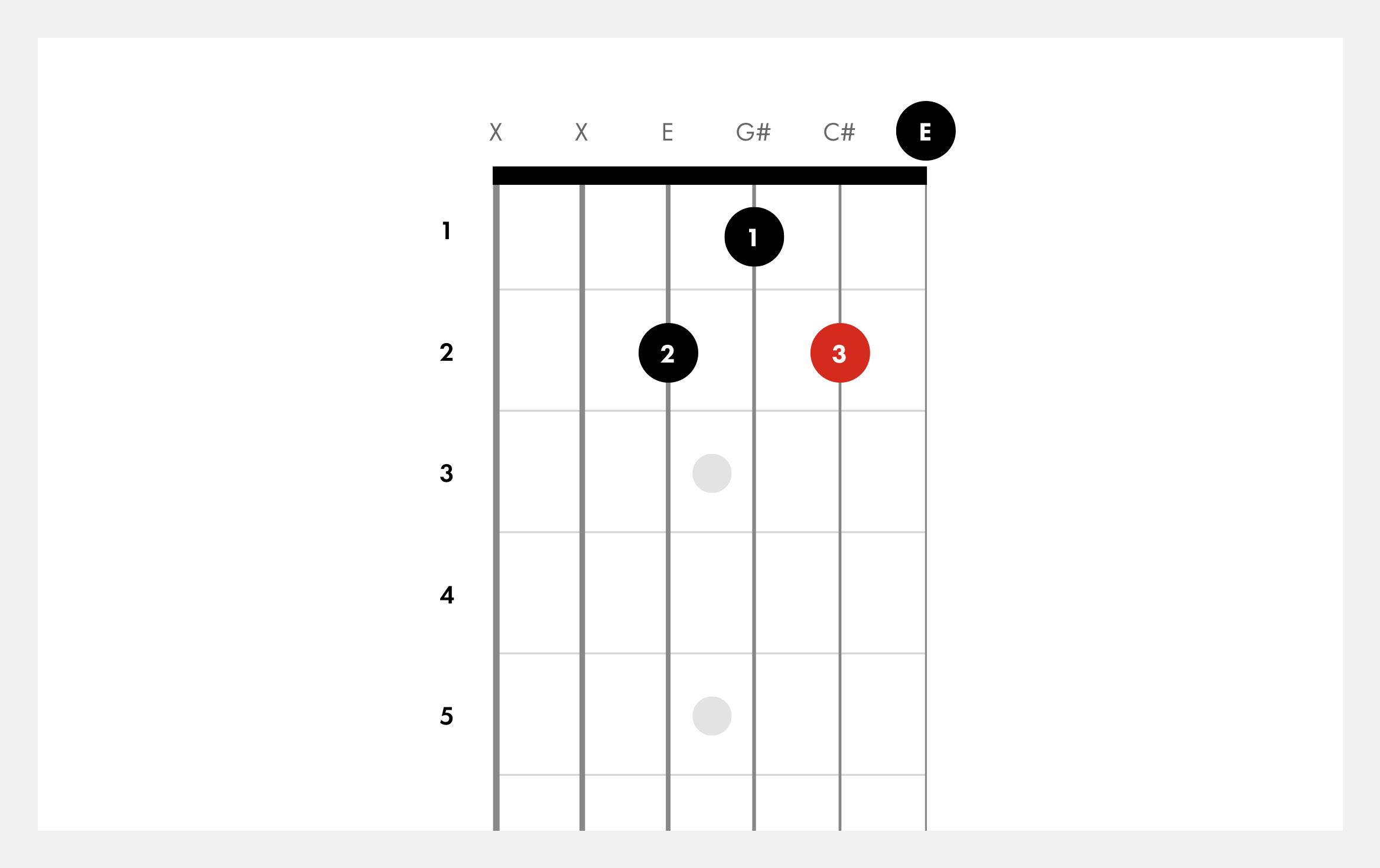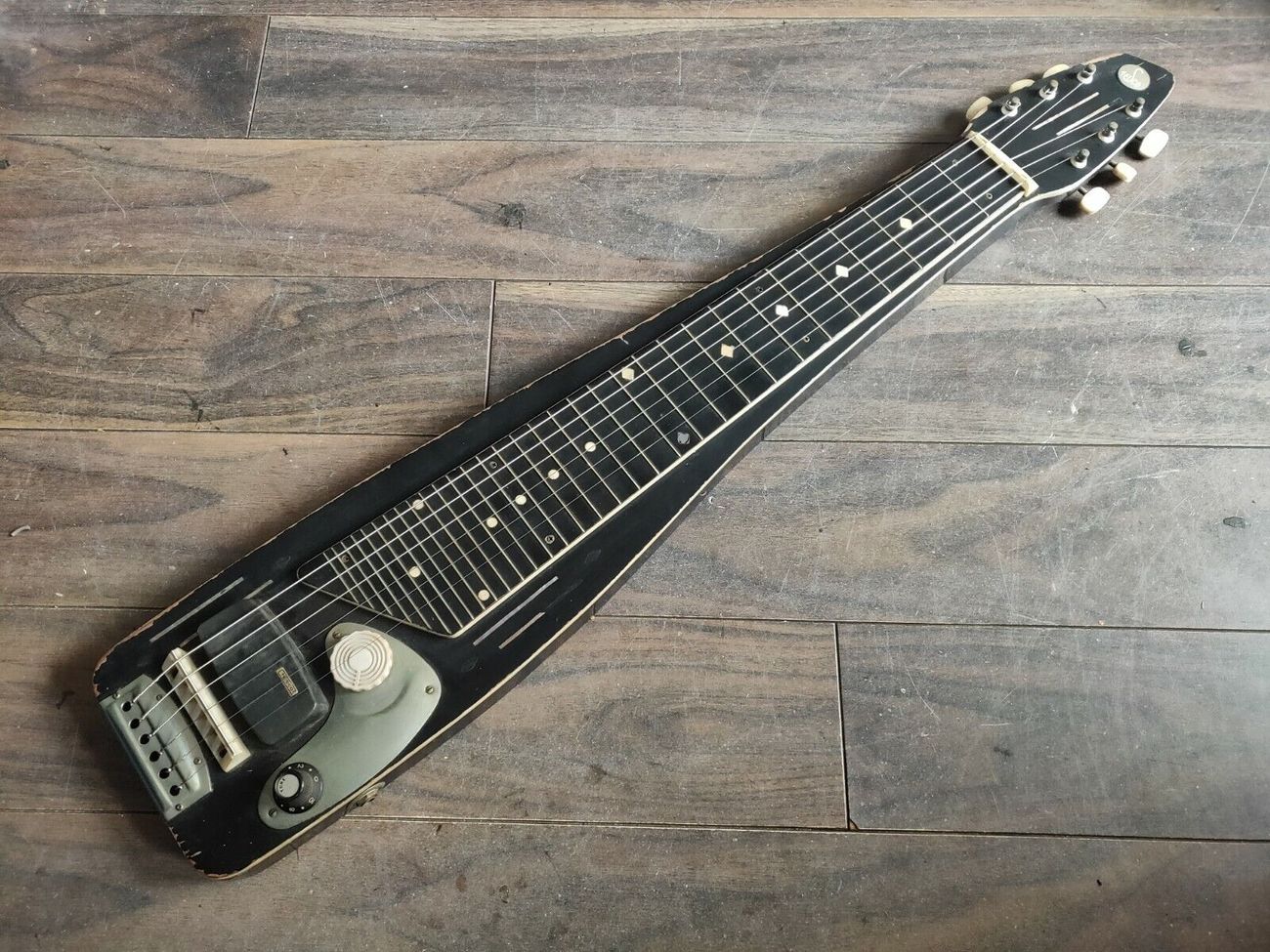Home>Instruments>Guitar>How To Play C Sharp Minor On Guitar


Guitar
How To Play C Sharp Minor On Guitar
Published: February 13, 2024
Learn how to play the C sharp minor chord on guitar with step-by-step instructions. Master this essential chord and elevate your guitar playing skills.
(Many of the links in this article redirect to a specific reviewed product. Your purchase of these products through affiliate links helps to generate commission for AudioLover.com, at no extra cost. Learn more)
Table of Contents
Introduction
Learning to play the C# minor chord on the guitar opens up a world of musical possibilities. This melancholic yet captivating chord progression is a staple in various genres, from rock and metal to jazz and classical music. Mastering the C# minor chord unlocks the potential for creating soul-stirring compositions and adding depth to your musical repertoire.
As a guitarist, understanding the fundamentals of the C# minor scale and chord shapes is essential for honing your skills and expanding your sonic range. In this comprehensive guide, we will delve into the intricacies of the C# minor chord, exploring its scale patterns, chord shapes, and practical techniques for playing it on the guitar. Whether you're a beginner seeking to grasp the basics or an intermediate player aiming to refine your proficiency, this article will equip you with the knowledge and techniques needed to conquer the C# minor chord with confidence and finesse.
Join me as we embark on a journey to unravel the enchanting world of the C# minor chord, where emotion and musicality converge to empower your guitar playing prowess. Let's delve into the nuances of the C# minor scale, dissect its chord formations, and uncover the art of seamlessly integrating this evocative chord into your musical endeavors. Whether you aspire to evoke poignant emotions or infuse your compositions with a touch of melancholic allure, mastering the C# minor chord will undoubtedly elevate your guitar playing to new heights.
Understanding the C# Minor Scale
The C# minor scale, also known as the C# natural minor scale, is a fundamental component of the guitarist’s toolkit. Comprising the notes C#, D#, E, F#, G#, A, and B, this scale embodies a hauntingly beautiful quality that lends itself to emotive musical expressions. Understanding the intervals within the C# minor scale is pivotal for navigating the fretboard with precision and imbuing your melodies with a captivating allure.
At its core, the C# minor scale follows a pattern of whole and half steps, adhering to the sequence of whole step, half step, whole step, whole step, half step, whole step, and whole step. This sequence forms the foundation of the scale, enabling guitarists to identify and recreate its distinctive sound across various positions on the fretboard.
When delving into the C# minor scale, it’s essential to familiarize oneself with the scale’s relative major, which in this case is the E major scale. By recognizing this relationship, guitarists can gain deeper insights into the harmonic context and melodic possibilities inherent in the C# minor scale. This knowledge empowers players to create captivating chord progressions, melodic motifs, and solos that resonate with emotional depth and musical sophistication.
Furthermore, grasping the nuances of the C# minor scale equips guitarists with the ability to infuse their playing with a sense of melancholic allure, making it a versatile and evocative tool for musical expression. Whether crafting introspective ballads, emotive solos, or brooding compositions, the C# minor scale offers a rich palette of tonal colors to enrich your musical endeavors.
As we continue our exploration, we will delve into the practical applications of the C# minor scale, uncovering its chord shapes, scale patterns, and techniques for seamlessly integrating its emotive essence into your guitar playing. By mastering the intricacies of the C# minor scale, you’ll unlock a world of creative possibilities and elevate your musical expressions to resonate with depth and emotion.
C# Minor Chord Shapes
Mastering the C# minor chord shapes is a pivotal milestone in a guitarist’s journey toward musical proficiency. By familiarizing yourself with various voicings and positions, you can seamlessly integrate the evocative essence of the C# minor chord into your playing, whether you’re strumming soulful ballads or crafting intricate melodies.
One of the most common C# minor chord shapes on the guitar is the barre chord form. To play the C# minor barre chord, position your index finger across all six strings at the fourth fret, effectively barring the fret. Next, place your ring finger on the sixth string at the sixth fret, your pinky on the fifth string at the sixth fret, and your middle finger on the fourth string at the fifth fret. Strumming all six strings produces the rich, resonant sound of the C# minor chord in its barre form.
Another popular variation of the C# minor chord involves the A minor shape, transposed to the fourth fret. To execute this voicing, position your index finger on the fourth string at the fourth fret, your middle finger on the third string at the fifth fret, and your ring finger on the second string at the sixth fret. Strum from the fifth string downward to unleash the captivating melancholy of the C# minor chord in this configuration.
Exploring different C# minor chord shapes across the fretboard empowers guitarists to infuse their playing with dynamic tonal textures and expressive nuances. Whether employing open chord voicings, barre shapes, or movable forms, the versatility of the C# minor chord lends itself to a myriad of musical contexts, from introspective ballads to intense, emotive compositions.
As you delve into the realm of C# minor chord shapes, consider experimenting with inversions and embellishments to add depth and creativity to your chord progressions. Embracing the intricacies of various voicings and fingerings enables you to craft compelling musical narratives that resonate with poignant emotion and musical sophistication.
By honing your proficiency in navigating the fretboard and mastering diverse C# minor chord shapes, you’ll expand your sonic palette and infuse your musical expressions with the haunting beauty of this evocative chord, elevating your guitar playing to new heights of creativity and emotional resonance.
C# Minor Scale Patterns
Understanding the C# minor scale patterns is essential for navigating the fretboard with confidence and unleashing the evocative essence of this hauntingly beautiful scale. By familiarizing yourself with scale patterns and positions, you’ll gain the dexterity and musical insight necessary to craft captivating melodies, dynamic solos, and expressive improvisations across the guitar neck.
One of the foundational C# minor scale patterns begins with the root note, C#, located on the ninth fret of the low E string. From this starting point, the scale unfolds across the fretboard, adhering to the sequence of whole and half steps that define the C# minor scale. As you ascend and descend the fretboard, internalizing the intervals and fingerings within this pattern will enhance your fluency and command over the scale’s emotive potential.
Another prominent C# minor scale pattern emerges from the A string, with the root note positioned on the fourth fret. Navigating this pattern empowers guitarists to explore melodic sequences and dynamic phrasing, infusing their playing with the melancholic allure of the C# minor scale. By internalizing the fingerings and note relationships within this pattern, you’ll expand your melodic vocabulary and unlock new avenues for musical expression.
Moreover, delving into scale patterns that span multiple octaves enables guitarists to traverse the fretboard with fluidity and precision, allowing for seamless transitions between different registers and tonal ranges. By connecting scale patterns and exploring their interplay, you’ll cultivate a deeper understanding of the C# minor scale’s harmonic landscape and melodic possibilities.
As you immerse yourself in the intricacies of C# minor scale patterns, consider integrating techniques such as slides, bends, and vibrato to imbue your melodic phrases with expressive flair and emotive resonance. These nuanced embellishments enrich your playing, infusing the scale patterns with a captivating sense of musicality and depth.
By honing your command over C# minor scale patterns and internalizing their intricacies, you’ll equip yourself with the tools to craft compelling musical narratives, evoke poignant emotions, and unleash the evocative power of the C# minor scale in your guitar playing endeavors.
Playing C# Minor on Guitar
When it comes to playing the C# minor chord on the guitar, mastering the fundamental techniques and fretboard navigation is crucial for unleashing the emotive potential of this captivating chord. Whether you’re strumming chords, arpeggiating melodic sequences, or crafting soul-stirring solos, understanding the practical aspects of playing C# minor empowers you to infuse your musical expressions with depth and emotional resonance.
Begin by familiarizing yourself with the foundational C# minor chord shapes, such as the barre chord form and the A minor shape transposed to the fourth fret. Practice transitioning between these voicings, ensuring that each note rings out clearly and resonates with the chord’s characteristic melancholic allure. By honing your proficiency in executing these chord shapes, you’ll lay a solid groundwork for integrating the C# minor chord seamlessly into your playing.
Furthermore, exploring different strumming patterns and fingerstyle techniques allows you to imbue the C# minor chord with dynamic textures and expressive nuances. Experiment with varying degrees of attack, dynamics, and rhythmic phrasing to evoke the desired mood and musicality, whether you’re delivering introspective ballads or driving, emotive compositions.
As you delve into playing the C# minor chord, consider incorporating melodic embellishments and chord inversions to add depth and creativity to your musical arrangements. By infusing your chord progressions with subtle nuances and harmonic variations, you’ll elevate the evocative essence of the C# minor chord, enriching your musical narratives with captivating tonal colors and emotive resonance.
Moreover, integrating the C# minor scale patterns into your playing enables you to craft captivating melodies, soulful solos, and expressive improvisations that harness the scale’s haunting beauty. By seamlessly transitioning between chordal passages and melodic motifs rooted in the C# minor scale, you’ll weave a rich tapestry of musical expressions that resonate with depth and emotional authenticity.
Whether you’re exploring the introspective realms of acoustic balladry or infusing your compositions with the raw energy of rock and metal, mastering the art of playing C# minor on the guitar empowers you to channel poignant emotions and musical sophistication through your instrument, elevating your playing to resonate with evocative power and expressive depth.
Tips for Mastering C# Minor on Guitar
As you embark on the journey to master the C# minor chord on the guitar, incorporating effective practice strategies and embracing musical creativity are essential for refining your proficiency and unlocking the emotive potential of this evocative chord. Here are some valuable tips to guide you along the path to mastery:
- Consistent Fretting Technique: Pay close attention to your fretting hand’s posture and finger placement when executing C# minor chord shapes. Ensure that each note rings out clearly and resonates with the chord’s characteristic melancholic allure. Consistent and precise fretting technique forms the foundation for expressive and resonant chord voicings.
- Rhythmic Exploration: Experiment with diverse strumming patterns, fingerstyle techniques, and rhythmic phrasing to imbue the C# minor chord with dynamic textures and expressive nuances. Embrace rhythmic exploration to infuse your playing with captivating musicality and emotive resonance.
- Scale Integration: Integrate C# minor scale patterns into your practice routine, allowing you to craft captivating melodies, soulful solos, and expressive improvisations rooted in the scale’s haunting beauty. Seamless transitions between chordal passages and melodic motifs enrich your musical narratives with depth and emotional authenticity.
- Ear Training: Develop your ear for musical nuances by listening attentively to the emotive qualities of the C# minor chord in various musical contexts. Train yourself to recognize the chord’s melancholic allure and emotive resonance, allowing you to infuse your playing with profound musical expression.
- Dynamic Expression: Embrace dynamic expression when playing the C# minor chord, incorporating melodic embellishments, chord inversions, and subtle nuances to add depth and creativity to your musical arrangements. Harness the chord’s evocative essence to weave captivating tonal colors and emotive resonance into your compositions.
- Exploration and Creativity: Encourage musical exploration and creativity as you navigate the intricacies of the C# minor chord. Embrace experimentation with chord voicings, melodic variations, and expressive techniques, allowing your musical expressions to resonate with authenticity and artistic depth.
By integrating these tips into your practice regimen and musical explorations, you’ll cultivate a nuanced understanding of the C# minor chord, empowering you to infuse your guitar playing with evocative power, emotional depth, and artistic finesse. Embrace the journey of mastering the C# minor chord as a gateway to unlocking profound musical expressions and resonating with the poignant allure of this captivating chord.











